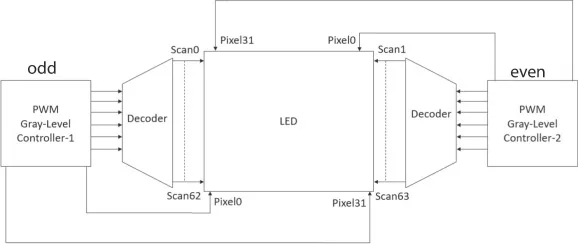Researchers have introduced a novel block-based control and driving system to increase throughput rates in a MicroLED system. What really sets MicroLEDs apart from LCDs and OLEDs is their rapid response time, allowing for unprecedented refresh rates – a critical factor for both high-end consumer electronics and professional-grade displays.

The researchers from the National Yunlin University of Science and Technology in Taiwan have an approach that deviates from the traditional line-by-line scanning method used in current displays. They propose a system that updates only the active or changing parts of a screen – the moving blocks – while leaving the static parts untouched. By addressing only the changing blocks, the system dramatically reduces the amount of data that needs to be transmitted and processed, leading to a more efficient use of bandwidth and a significant boost in the refresh rate.
Their experiments showcase impressive results. By implementing this block-based system, MicroLED display modules have achieved processing speeds ranging from 600 to 1100 frames per second (FPS), depending on the video content’s motion characteristics. These speeds are a significant leap from what current technologies offer, opening doors to smoother, more dynamic display experiences.
At the heart of this system is the innovative use of FPGA (field-programmable gate array) control, a technology that offers flexibility and speed in processing. The control panel decodes SPI (serial peripheral interface) signals, determining the block address for updating memory data. This selective approach ensures that only the necessary data for the moving parts of the display is transmitted, enhancing the system’s overall efficiency.
Reference
Hsia, S.-C., & Hung, W.-C. (2023). High throughput rate with block-based control for micro-LED display. Displays, 80, 102559. https://doi.org/10.1016/j.displa.2023.102559

